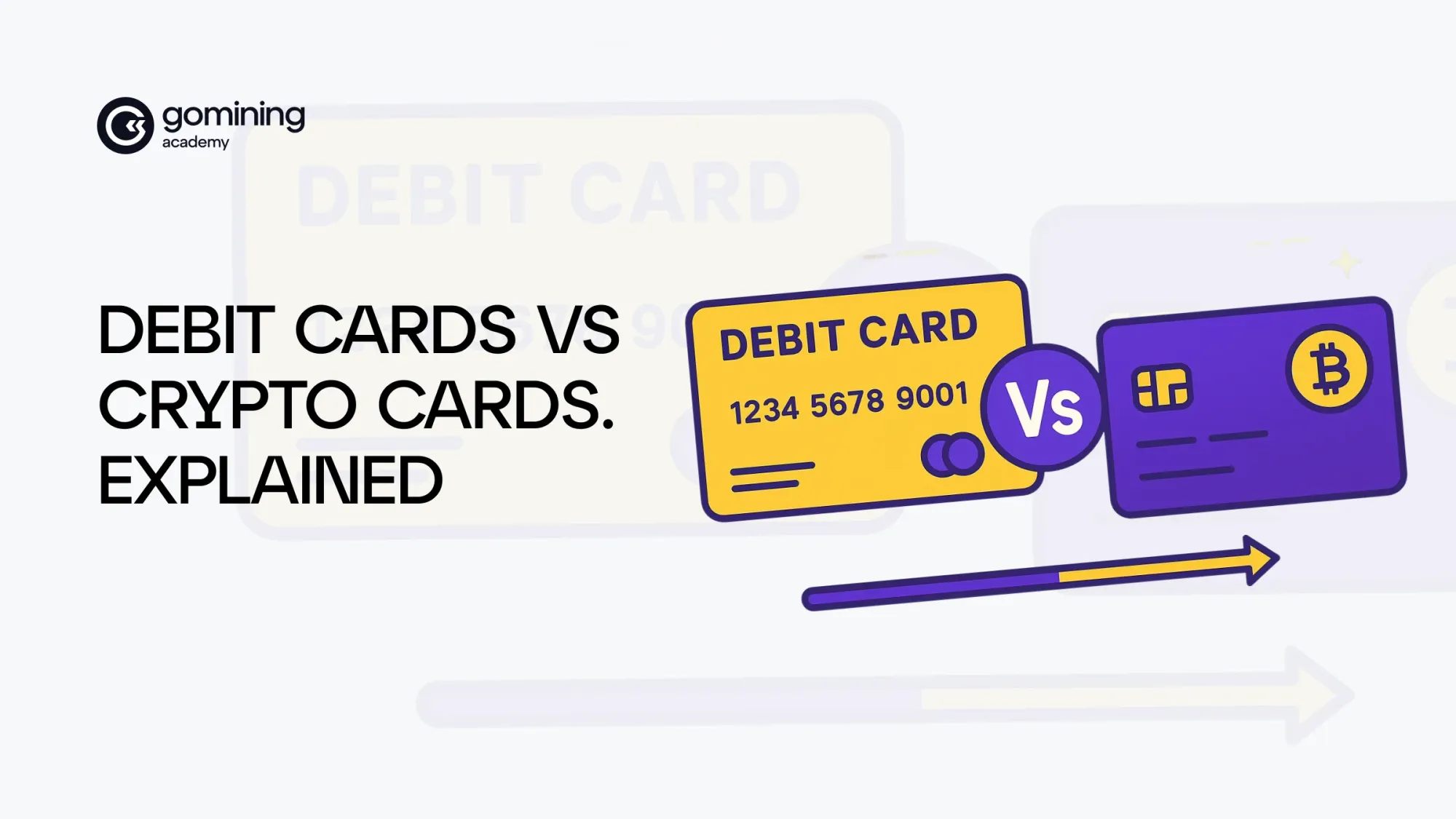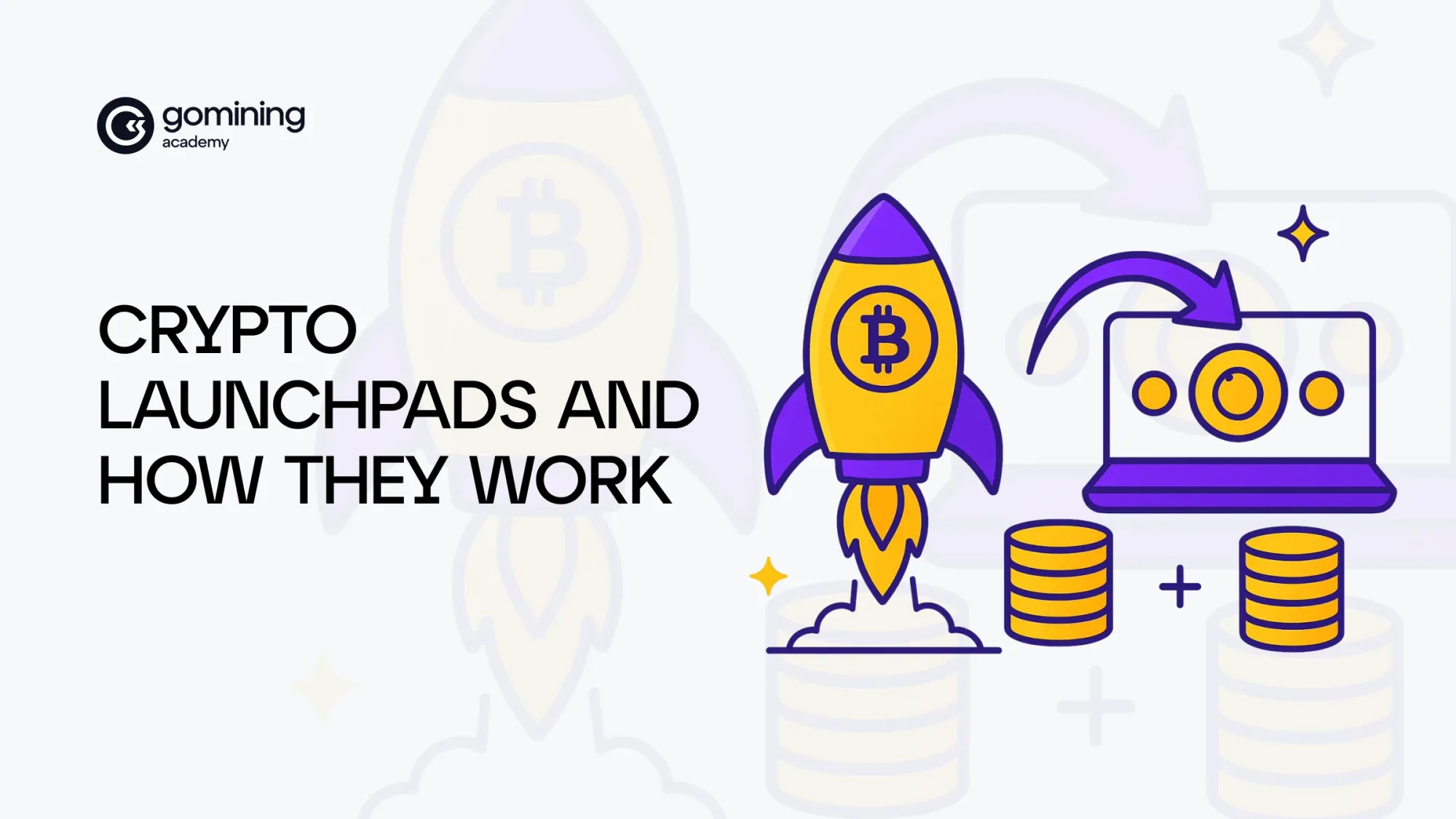Buying a Coffee With The Bitcoin Lightning Network
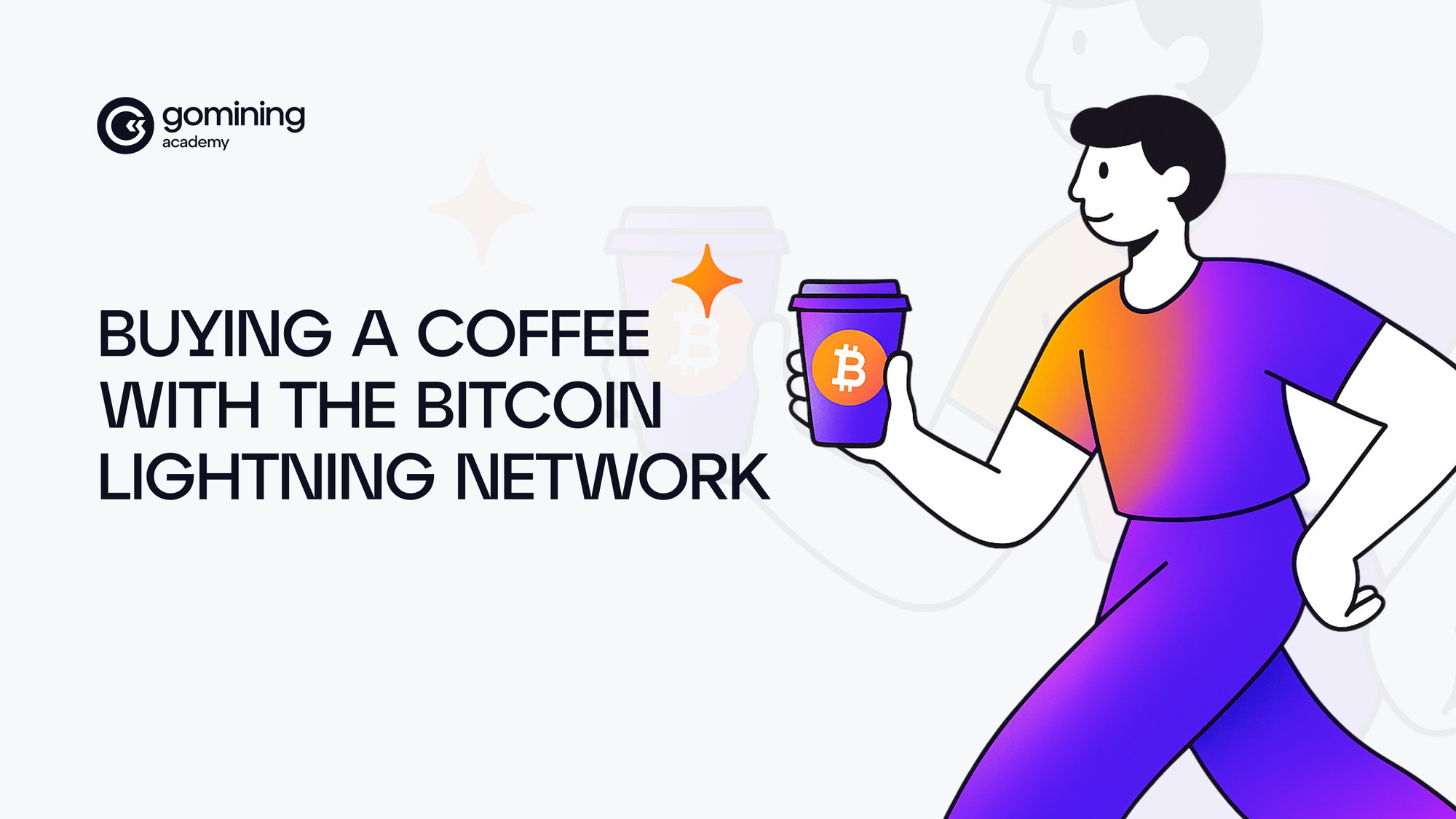
One of the biggest criticisms of Bitcoin is that, despite all the hype, you still can’t easily buy a coffee with it. That’s because using Bitcoin directly is often too slow and expensive for everyday transactions. But that’s starting to change. A new layer of technology—the Bitcoin Lightning Network—promises to fix Bitcoin’s speed and cost issues, making it practical for everyday use. The Lightning Network is generally called a second-layer network.
In this article, we’ll break down how the Bitcoin Lightning Network works as a second layer network and how it’s turning Bitcoin into something you might actually use to buy coffee.
Table of Contents
- What is Bitcoin Lightning Network
- How Does Lightning Network Work?
- It's Not Just 1-on-1 — Lightning Network Is a Web of Channels
- Bitcoin Network vs Lightning Network?
- How to Use Bitcoin Lightning Network
- Choose the Right Lightning Network Wallet
- Fund and Activate Your Wallet
- Scan, Send, and Confirm in Seconds
- You Can’t Buy Coffee with Gold, But You Can with Lightning
- Earning Spendable BTC with GoMining
What is Bitcoin Lightning Network?
Imagine you're buying a cup of coffee with your credit card. The café accepts your payment, hands you your drink, and everyone's happy.
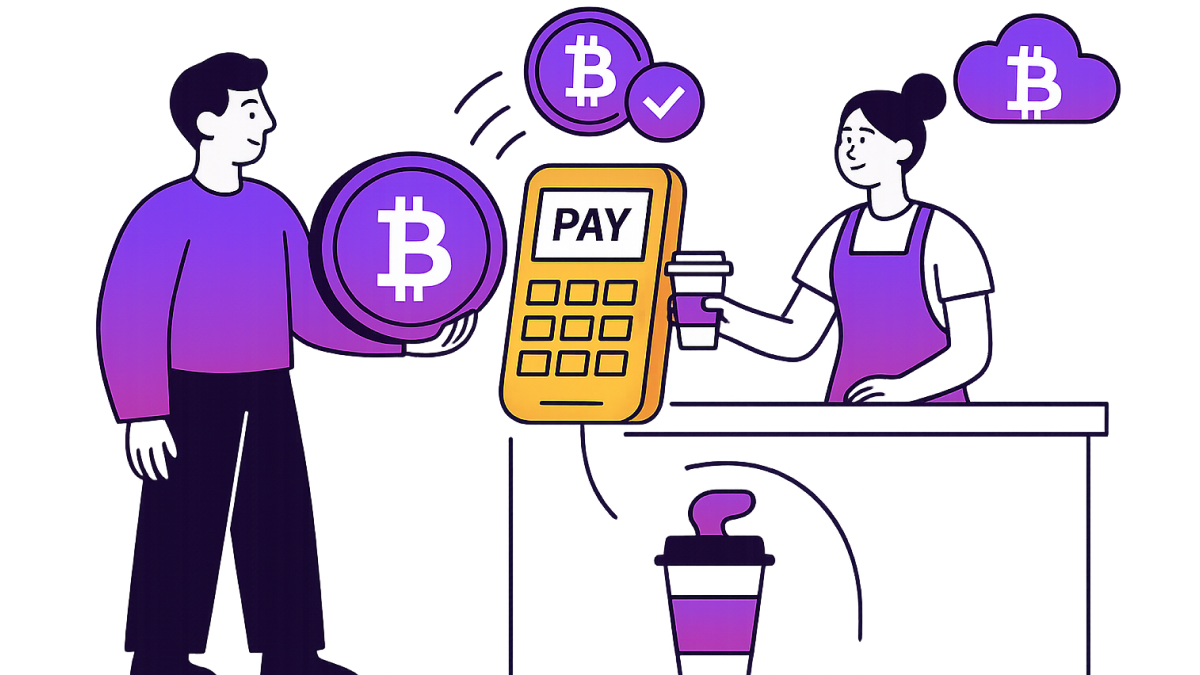
But if you tried the same thing with Bitcoin... Well, it’s a whole different story.
On its own, Bitcoin is like that friend who insists on writing every check by hand. Each transaction is broadcast to the entire network, mined, confirmed, and etched into a global ledger. That takes around 10 minutes per transaction—sometimes longer—and during busy times, the fee you pay might be higher than your actual coffee. It’s like waiting awkwardly at the register while your cappuccino goes cold.
Here’s the problem: Bitcoin’s base layer wasn’t designed for small, speedy everyday payments. It’s rock-solid for security and decentralization, but that comes at the cost of speed.
And here’s the twist: When you pay by card, the money doesn’t magically land in the café’s bank account that instant. Behind the scenes, your payment gets tossed into a giant bucket of other transactions, all of which are quietly batch settled later—often overnight—between banks. Fast for you, but nice and slow under the hood.
Enter the Lightning Network, strutting in like a barista with espresso-fueled superpowers.
BTC Lightning takes inspiration from how banks batch settle credit card charges—minus the middleman, plus some digital mastery: it’s decentralized, trustless, and fast. Instead of every little Bitcoin payment clogging up the main blockchain, Lightning Network moves transactions off-chain and only settles the final tab on the Bitcoin network when you're done. It’s like opening a running tab at a café—buy as many lattes as you want, and settle the total once.
In short, what is the lightning network?
⚡ Lightning is Bitcoin’s fast lane
It turns BTC into spendable, sippable money—without sacrificing what makes Bitcoin great in the first place.
How Does Lightning Network Work?
To understand how the Lightning Network works under the hood, let’s go back to our trusty bar tab analogy.
Imagine Alice and Bob do business together often—maybe Alice grabs a coffee from Bob’s café every morning. Instead of paying with Bitcoin each time (and dealing with slow confirmation times and annoying fees), they open a Lightning payment channel—a kind of digital bar tab.
Now, in a real bar tab, you trust the bartender not to add extra beers to your bill, right? That’s fine when it’s just beers and buddies. But Bitcoin doesn’t do trust. It does math. In the Bitcoin Lightning Network, there’s no bartender to trust—and no need to.
To do this, they both lock some BTC into a shared account. But here’s the twist: there’s no middleman. Instead, they use a special kind of digital agreement on the Bitcoin network—in the crypto world these are called smart contracts.
In this case the smart contract sets some automatic rules written into code. It might say things like:
☑️ “This money can only be spent if both Alice and Bob agree”
⏳ “If Bob doesn’t claim his money within two days, it goes back to Alice
These rules are enforced by the Bitcoin network itself—no bank, no third party, just code doing its thing. That’s the power of the Lightning Network: smart, trustless tabs running on top of Bitcoin.
💡 The Bitcoin Lightning Network makes the payments snappy. The Bitcoin network holds the vault and enforces the rules if things go sideways.
If someone tries to cheat (say, Bob tries to claim more than he’s owed), the system goes stops them from doing so.
The cheater gets exposed, and the honest person can claim all the money in the channel. Yes, really. The rules are built in—so even if you’re dealing with a total stranger, the math has your back.
That’s what we mean when we say it’s trustless: you don’t have to trust people, just the protocol.
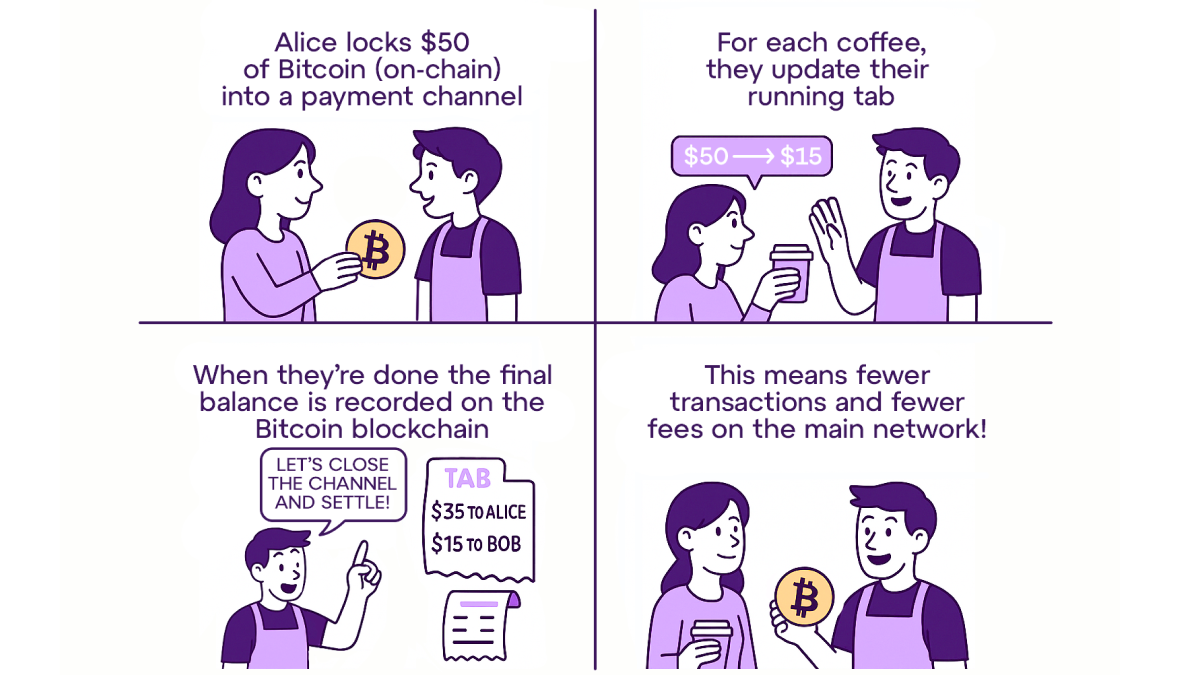
Now, each time Alice buys a coffee from Bob—$3, $5, whatever—they update their running balance off-chain, just between themselves. No need to broadcast every latte to the entire Bitcoin network.
At any time, either one of them can say, “Alright, let’s settle up.” When they close the channel, the final balance is calculated—for example:
- Alice has spent $15 on coffee ☕
- Bob gets $15 worth of BTC
- The remaining $35 goes back to Alice
Only then is this final result sent to the Bitcoin blockchain—as a single transaction.
So instead of 10 tiny payments cluttering up the blockchain, there are just two on-chain records:
- One when the channel was opened with $50,
- And one when it was closed and the final tab settled.
Everything in between? Instant, feeless, off-chain ingenuity—like swiping your café loyalty card instead of tapping your bank every single time.
It's Not Just 1-on-1 — Bitcoin Lightning Network Is a Web of Channels
That bar tab analogy works great when it’s just you and a buddy slinging sats back and forth. But what if you want to pay someone you don’t have a tab open with?
No problem.
The Bitcoin Lightning Network is like a global network of bar tabs, and it can route your payment through a chain of connections—just like a package zipping through shipping hubs. 📦✨
Let’s say:
- You have a channel with Alice,
- Alice has one with Bob,
- and you want to pay Bob.
Boom. The Bitcoin Lightning Network does a little behind-the-scenes choreography and sends your payment through Alice. Nobody needs to open a new channel or even know each other. It’s like having a friend-of-a-friend deliver a pizza on your behalf. 🍕💸
Bitcoin Network vs Bitcoin Lightning Network?
Bitcoin Lightning Network: Not a Blockchain – But a Bitcoin Superhighway
A common point of confusion for those new to the space is whether the Bitcoin Lightning Network itself is a blockchain. To be clear, the Lightning Network is not a blockchain. That’s right. No miners. No waiting around for someone to solve a digital Sudoku puzzle just so your transaction can go through.
Instead, the Bitcoin Lightning network is more like a private network of fast lanes layered on top of Bitcoin. Think of it as VIP express routes between users. When two people open a payment channel, it’s like they’re building their own little private bridge where they can toss Bitcoin back and forth without telling the whole world every time.
🛣️ Independent Channels = Mini Private Ledgers
Each Lightning channel is a direct line between two people—just the two of you, passing notes in class without the teacher (aka the blockchain) watching. It’s like having your own private Bitcoin diary that only you and your friend can write in.
🚀 Parallel Transactions = Speed Dating for Payments
Each Lightning channel is like its own little table at a speed-dating event. Just two people (or wallets) passing notes back and forth—no need to get the whole room involved. Since these notes (a.k.a. transactions) stay off the main blockchain, there’s no waiting around for global miner approval every time. The result? Dozens, hundreds, even thousands of channels zipping with activity at once, like caffeinated bees in a money meadow.
📈 Massive Scalability = Bitcoin Goes Big
Because all those channels operate in parallel—without shouting over each other on the blockchain—the Bitcoin Lightning Network can handle millions of transactions per second. That’s a quantum leap beyond Bitcoin’s usual 7 TPS. Only the “open” and “close” of a channel get logged on the blockchain—everything else stays fast, private, and nearly free.
As a result of this, transactions can take just milliseconds not ten minutes, and cost much less. In some cases, direct channel payments can even incur 0% fees. Making it possible to buy even a cup of coffee at a café.
To further simplify the user experience, the Bitcoin Lightning Network introduced the Lightning Address. This is a human-readable internet identifier, similar to an email address (e.g., [email protected]), that allows users to send and receive Bitcoin over the Lightning Network with unprecedented ease. This eliminates the need for complex, long Bitcoin addresses or the constant generation of new invoices for every payment. A Lightning Address is static, making it an ideal solution for businesses or individuals who frequently receive payments.
How to Use Bitcoin Lightning Network
Now that we have covered the theory behind the Bitcoin lightning network, it is time to discuss how to use it.
Choose the right Lightning Network Wallet
To hop onto the BTC Lightning Network you first need a reliable crypto wallet on the Bitcoin Lightning Network. On mobile, a BTC Lightning wallet like Muun or Phoenix handles channels behind the scenes; just scan, tap, and pay. Desktop fans often prefer Zeus, while Breez frequently tops “best Bitcoin Lightning wallet” lists thanks to its non-custodial design and built-in point-of-sale mode.
Fund and Activate Your Wallet
After installing your chosen Bitcoin lightning wallet, transfer a few on-chain satoshis into it. The app automatically converts those funds into off-chain liquidity, ready for instant payments across the Lightning Network Bitcoin rails. Some wallets even let you buy sats directly with a debit card, streamlining the setup.
Scan, send, and confirm in seconds
With liquidity loaded, grab your recipient’s Lightning invoice or human-readable address, double-check the amount, and hit Send. Payments zip across the mesh in milliseconds—no block confirmations, no hefty fees. Your balance updates instantly, proving just how fast and frictionless the Lightning Network Bitcoin experience can be.
You Can’t Buy Coffee with Gold, But You Can with Lightning
The Bitcoin Lightning Network has taken Bitcoin’s inherent power – a secure, decentralized form of money – and added the missing ingredient to make it truly usable for everyday life: speed.
By using smart channels and clever cryptography, Lightning makes Bitcoin transactions as fast as texting and as cheap as, well, almost free. It’s a playful, ingenious solution to the classic “scaling problem,” allowing Bitcoin to scale up to millions or billions of tiny transactions without breaking a sweat.
For crypto-curious beginners, the Bitcoin Lightning Network might sound complex at first, but all these analogies of bar tabs, coffee purchases, and lightning-fast payments boil down to this: Bitcoin can now be both digital gold and digital cash. You hodl Bitcoin for the long term, yes – but you can also spend it conveniently on a coffee or a burger or to tip your favorite blogger, thanks to Lightning. The network empowers Bitcoin to fulfill Satoshi Nakamoto’s vision of a peer-to-peer electronic cash system for the world, while still preserving its identity as sound money.
Every new user who downloads a Lightning wallet and buys their first coffee or pays their friend back for lunch with Bitcoin is experiencing a little bit of a monetary buff that wasn’t possible a few years ago. That smile when they realize “Whoa, it’s already done!” – that’s Lightning at work. It’s making crypto fun, accessible, and instantaneous. No need to ask “but can it scale?” anymore – we have the technology in hand.
As more individuals and businesses use Bitcoin for payments—whether for coffee, remittances, or tipping—it generates increased demand for the Bitcoin Lightning Network,, which in turn leads to greater liquidity and more efficient routing, making the network even more valuable and useful.
Of course the reasons why people buy crypto are not just to buy a cup of coffee. For many, it’s about building long-term crypto investments that hedge against inflation or diversify a portfolio. Even entire states ponder whether to set up a Strategic Bitcoin Reserve. Nevertheless, widespread, routine use would prove Bitcoin’s worth as a working currency, not merely digital gold tucked away in cold-storage wallets like bullion in a vault.
In the end, the Bitcoin Lightning Network is nudging Bitcoin out of its “digital gold” phase and into its destiny as fast, borderless money. With instant, sub-cent payments, Bitcoin suddenly behaves like everyday cash rather than a slow-moving investment. So the next time someone quips, “Bitcoin is great, but you can’t buy coffee with it,” you can grin back: “You can’t buy coffee with gold—but you can with Lightning!” ☕⚡
Earning Spendable BTC with GoMining
To take advantage of Lightning’s instant payments, you’ll first need to get some Bitcoin to spend. One way to earn Bitcoins is with GoMining, which offers a new innovative way to Bitcoin mining.
On the GoMining Bitcoin mining app, you can mint your hash-power-backed NFTs of digital avatars. This will give you access to mining rigs that have the latest hardware, giving you the most Bitcoin for your buck. And all this without having to purchase some crypto mining farm full of noisy machinery and all the pain involved.
Check ROI in seconds with the platform’s Bitcoin mining calculator, and browse themed NFTs on GoMining’s digital miner collections while your miner cranks out BTC day after day.
Ready for more perks? The whole ecosystem runs on a clear crypto tokenomics model that’s catnip for anyone who geeks out on incentive design. Pay maintenance fees with the utility GoMining token to shave up to 20% off your costs, climb the GoMining VIP loyalty program for extra boosts, or deploy hash-power in clan battles inside GoMining’s own Bitcoin mining game called Miner Wars.

